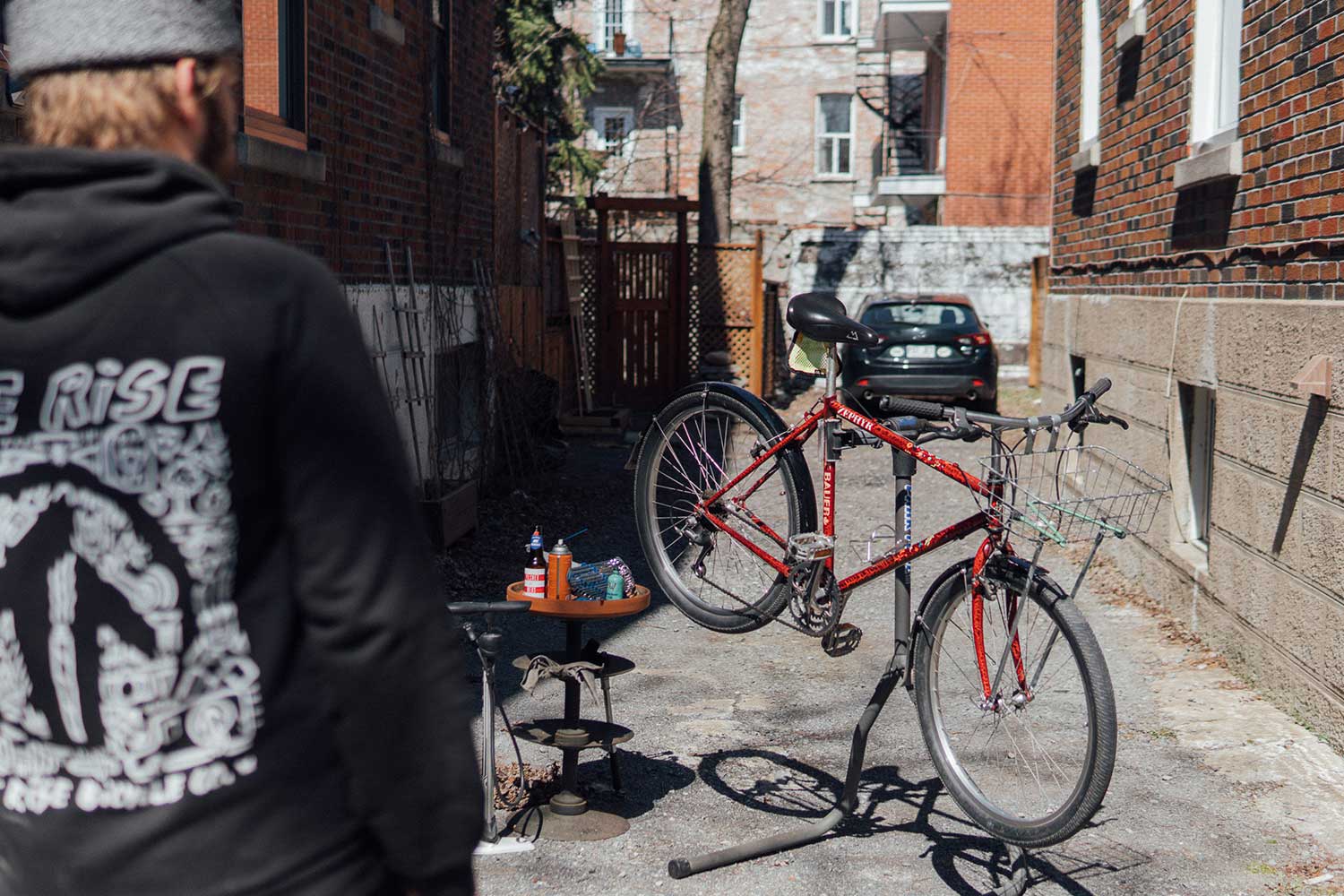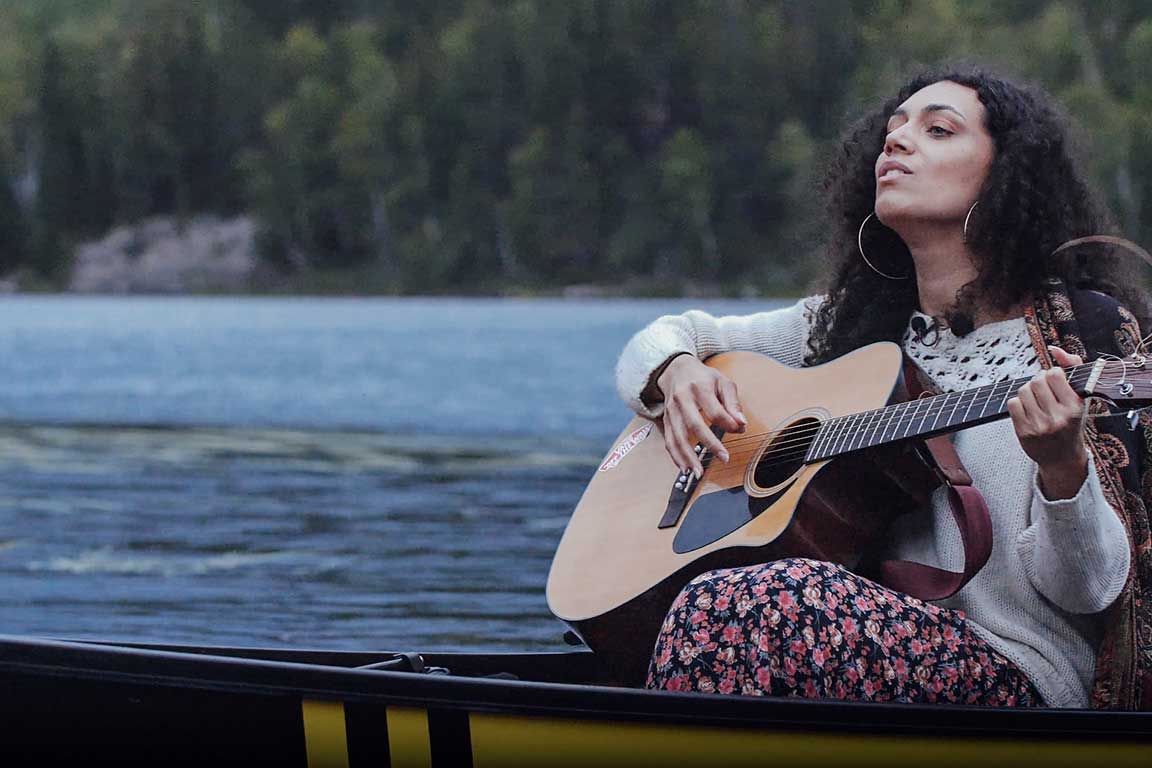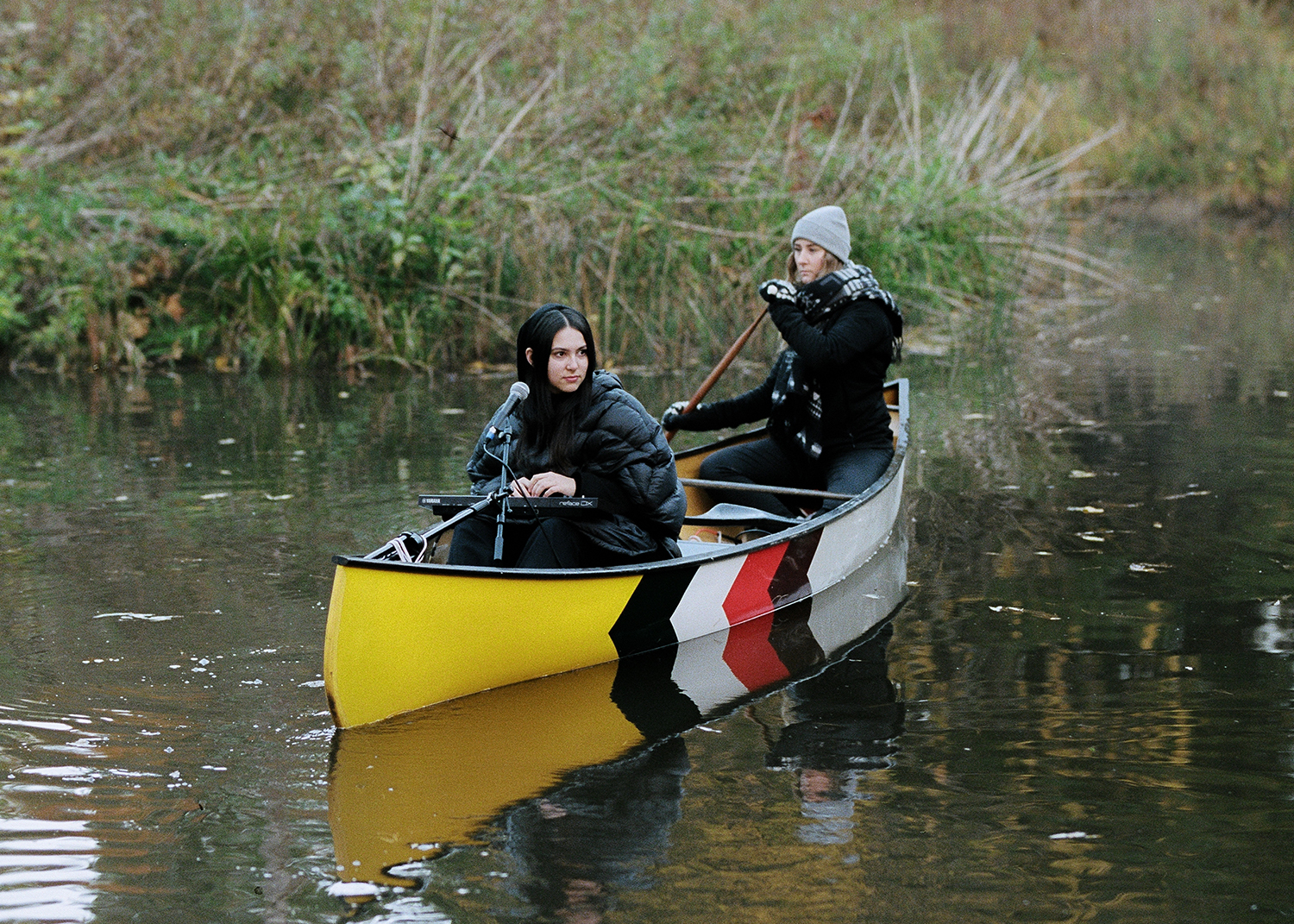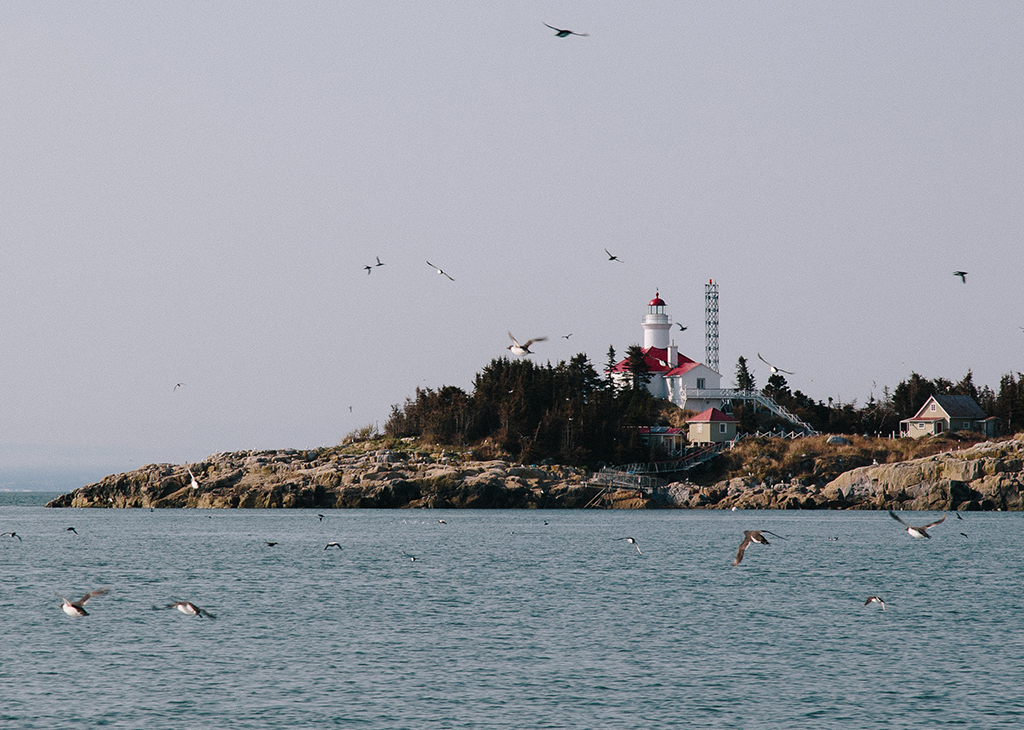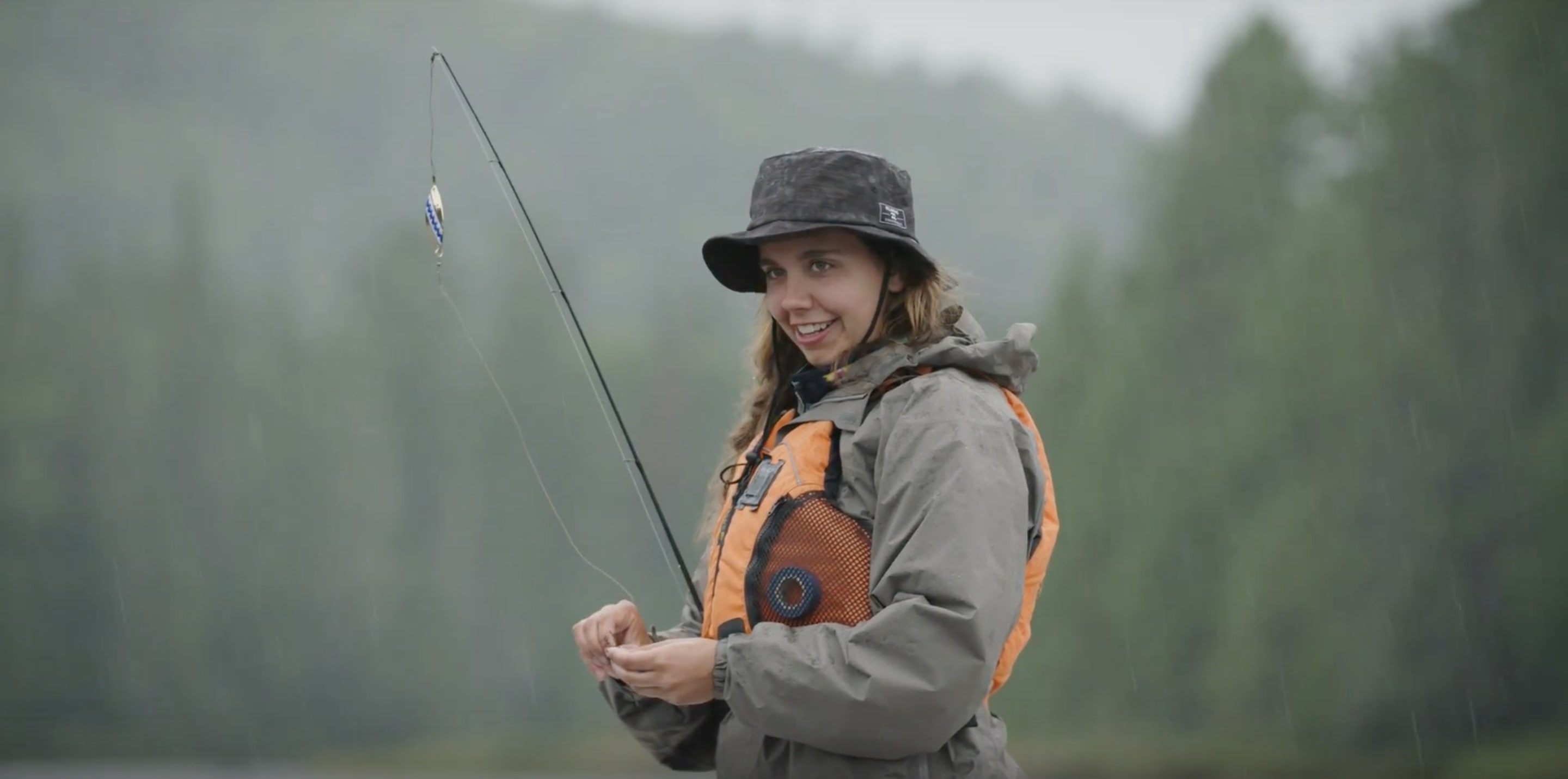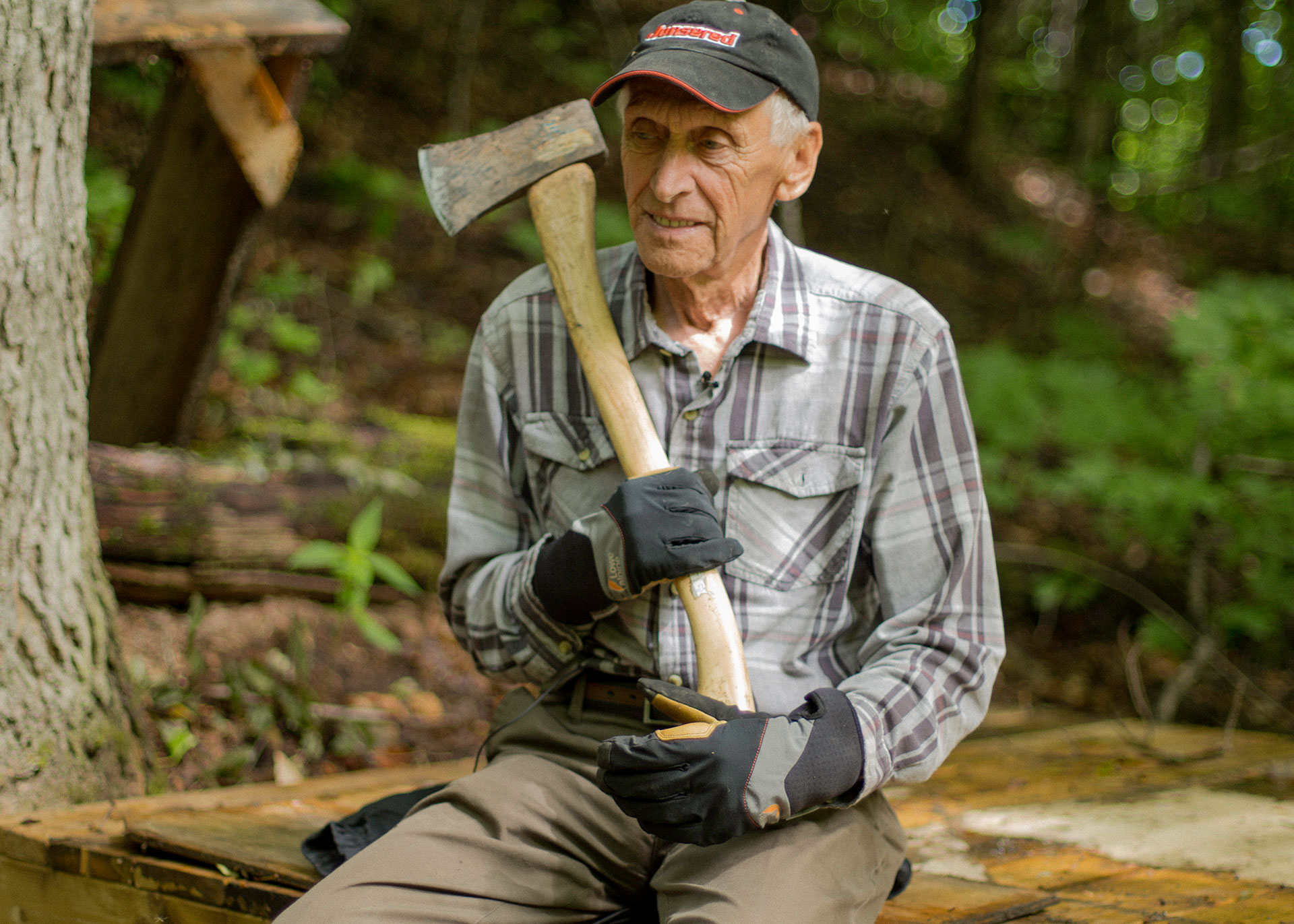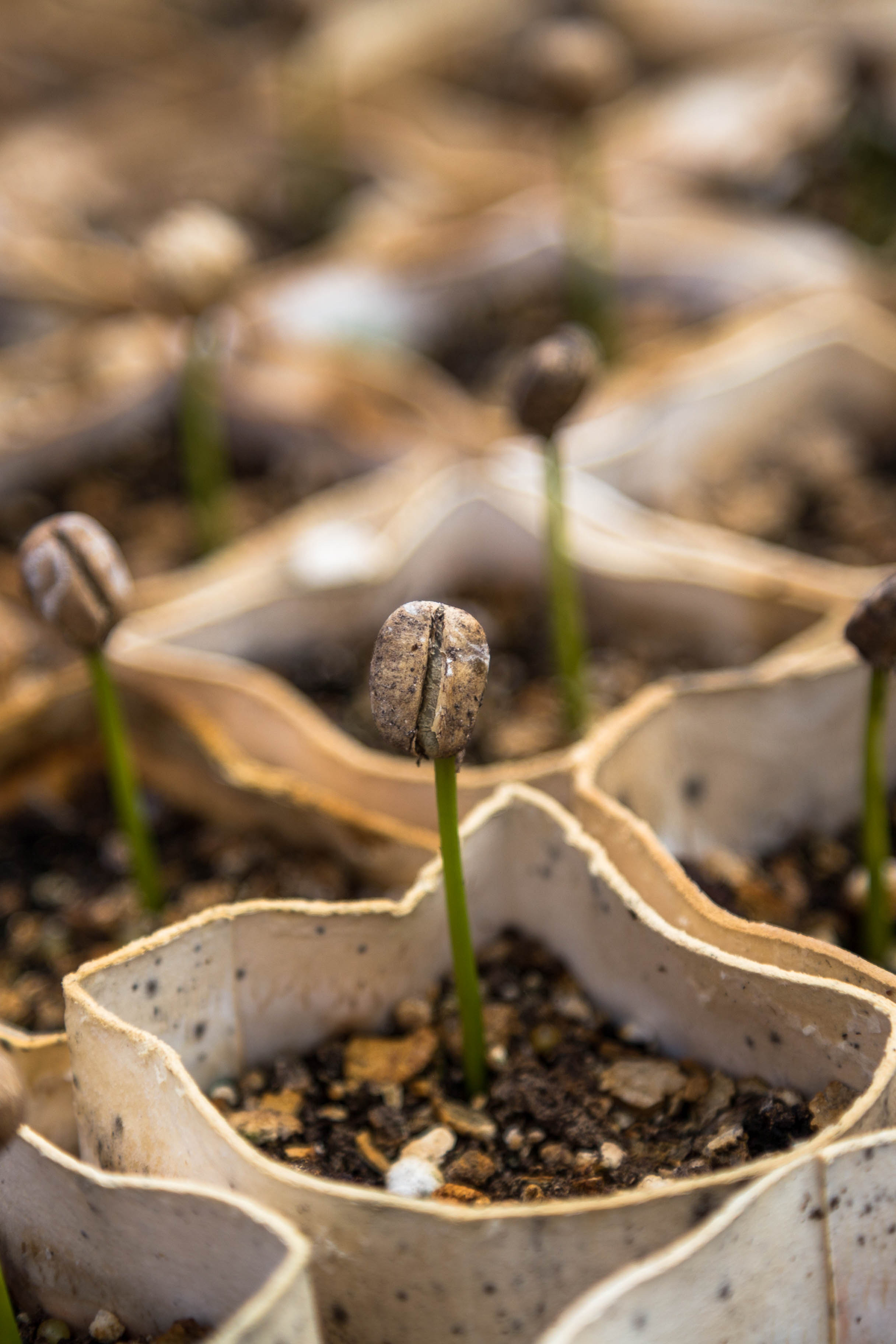Portrait
Kalaallisuut
Weaving Greenlandic identity.
Nuuk, GrEenland 64° 10’ 50” N 51° 43’ 18” W
In Nuuk, the world’s northernmost capital, modern architecture embellished with Inuit art stands alongside colonial houses made of wood. These houses sport different colours according to their function, a Danish tradition inherited from the 18th century: stores are painted red, hospitals are yellow, police stations are black, and fish plants are blue. And clothing is rather flamboyant. In the streets, young women walk around with cellphones while dressed in brightly coloured traditional costumes. The bead patterns, embroidered flowers, and hand-crocheted lace that adorn their red coats contrast sharply against the immaculate white backdrop of glaciers towering over the city.
“Jeanette, why such colourful clothing?”

I turn to the Greenlandic entrepreneur who has offered to take me on a guided tour of her hometown and show me her roots. As we talk and get to know each other, I’m getting a clearer picture of what this Nordic country is all about.
“It’s the kalaallisuut, our national costume.”
As a child, Jeanette Holding would go see her grandmother every night and observe her priceless traditional skills at work.
“She would always sit in the same place to sew beads, embroidery, or seal pelts. I’d watch her work on the same outfit, piece by piece, for months. It was our quality time.”
In her family, every woman has a kalaallisuut, but Jeanette is the only one who knows how to make and repair them. And she’s proud of that. “My grandmother did most of the work and helped make my daughter’s and my niece’s as well. I’d like to do the same thing for my grandchildren, but I wouldn’t tackle an entire costume. It’s too time-consuming and really hard on the hands.”

While wearing this outfit has become as popular as ever in modern-day Greenland, the art of making it is disappearing as women are progressively shifting away from certain traditional duties to enter the workforce. These days, Jeanette’s education and entrepreneurial career put her in an enviable position—just like her grandmother’s skills once did. But there was much more to it than respect and prestige; by skipping back two generations, you can see how these women’s artisan skills were of paramount importance. “An entire family’s survival could depend on their ability to stitch pelts together into clothing warm enough for the hunter to withstand the arctic cold.” But first and foremost, the art of hide tanning had to be mastered. Using a cutting instrument called oulou—their most prized possession—women tanned the hides of seals, polar bears, reindeer, dogs, and rabbits. Cleaned, scraped, and softened, then chosen according to colour, the hides were carefully cut and stitched with the fur facing downward to make sure they kept water out.
Wildlife was used for food, clothing, and even transportation. Pelts covered qajaqs, or traditional kayaks, and umiaqs, small boats with open decks, and no part of the animal went unused—not even the tendons, which were utilised as thread for making coats.
Apart from being purely practical, clothing also held spiritual significance. It could be used to ward off evil during life’s most critical moments: pregnancy, birth, puberty, and death. It had to cater to social and family conventions, but also had to please the spirits of the animals the Greenlanders depended on for survival, so they could be granted their protection in return. For example, the holes in the beads, which were made out of bones, allowed good and evil spirits to “circulate.”
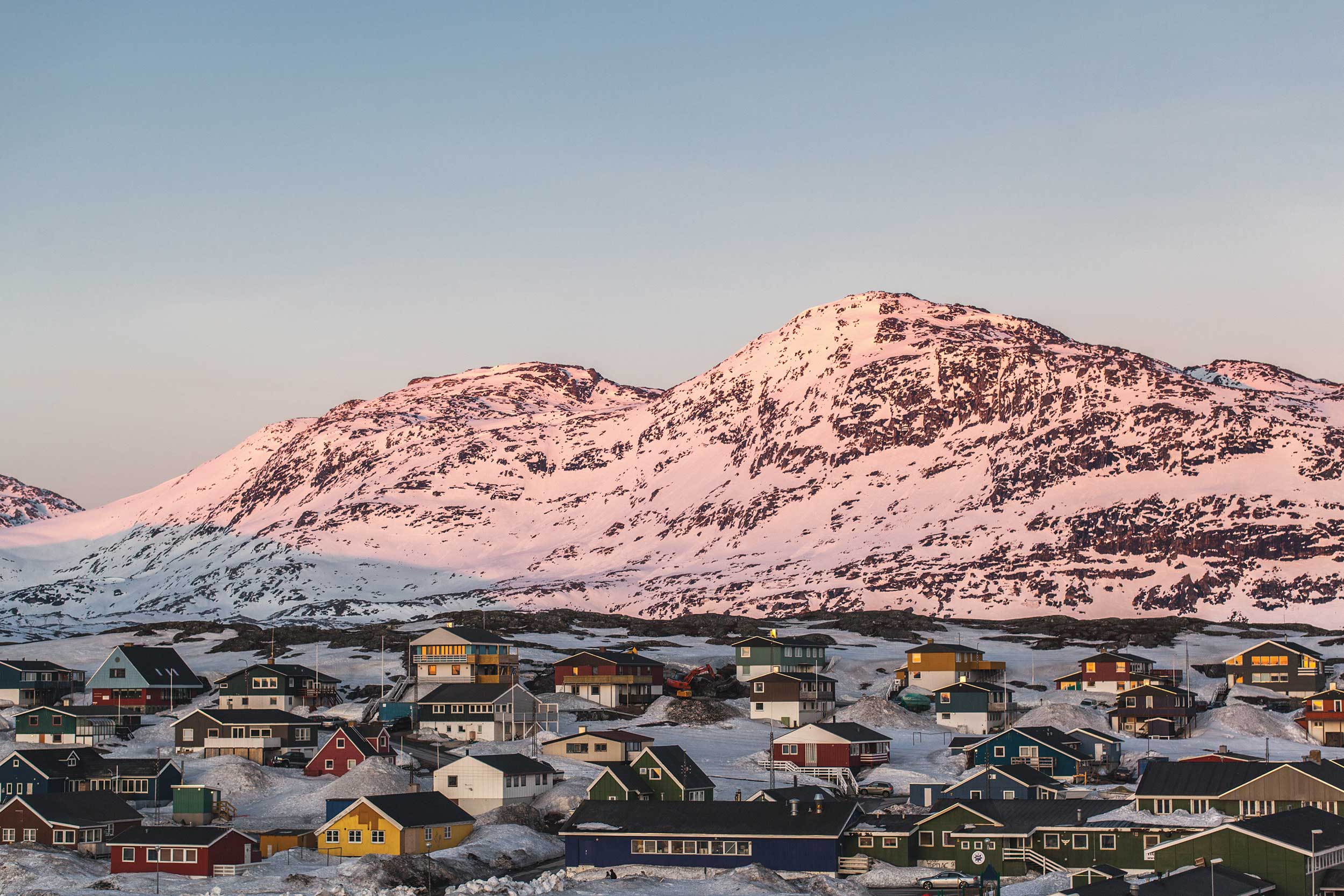
In Greenland’s pre-Christian traditions, the kalaallisuut was never worn for special occasions. But, little by little, the women of Greenland saw European celebrations, like marriage, as opportunities to perfect and show off their traditional dress. So they adapted tradition to accommodate a more modern lifestyle.
The nature of their ornamentation has also adapted considerably. Access to cotton, wool, and silk has made for a much lighter costume. Inuit women have learned embroidery, lacework, crochet, and knitting. The floral designs that decorate them today are inspired in particular by traditional Danish costumes: a reflection of Danish-governed modern Greenland, where Inuit and European influences intermingle. The beads, which were once made from ammassat (capelin) vertebrae, have been made of coloured glass since the late 19th century. They cover the bulk of a woman’s bust and represent her prestige, while the outfit’s colours are a sign of her maturity. “Young women wear a bright red shirt under their bead necklace, while older women opt for darker shades,” Jeanette explains. An undeniably effective communication tool, one could say.
The kalaallisuut is the well-crafted result of Greenland’s historical, spiritual, and cultural trajectory, yet it remains unique to every family. “Some of the parts in my daughter’s costume were inherited. For example, her bead necklace is the one I received from my aunt, and which decorated my first kalaallisuut.”
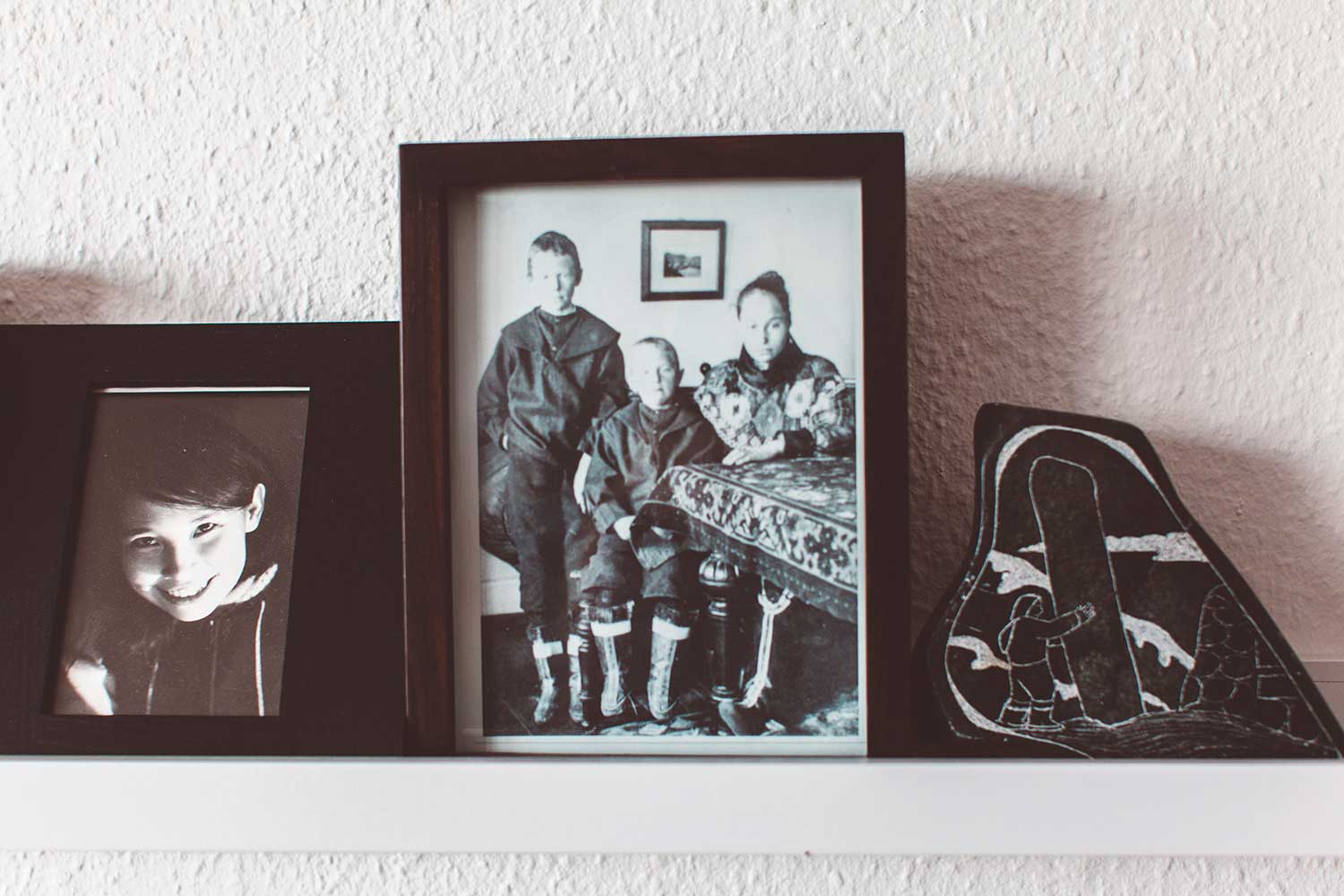
Knowing how to repair it not only ensures its longevity, it protects the family tradition.
Those who still know how to stitch together a kalaallisuut are proud of it, and their skills are becoming extremely valuable on the market. “The outfit can easily fetch 35,000 Danish krone [CA $7,500]. You save a lot of money by being able to do it yourself.” However, Jeanette admits that young women are less and less inclined to learn how to make it themselves. “I think those who can afford to would rather buy it.” That being said, on average, it appar- ently takes nearly 10 years to get a traditionally crafted national costume!
While Greenland was isolated from foreign trade for a long time, it’s becoming easier than ever to get cheap clothes made in other places. “Synthetic materials are readily available on the market and are unfortunately all the rage. And the lower the price, the worse they are for the environment,” states Jeanette.
Nonetheless, the Inuit continue to have a certain attachment to their traditions and find creative ways to integrate them into their lifestyles. Louise Lynge Berthelsen, a local designer, came up with the idea of starting Nuuk Couture, an environmentally responsible clothing brand, which uses natural fibres with a low environmental footprint, such as linen and bamboo. “I’m also the first designer in Greenland to offer a novel version of avittat embroidery,” she says. Traditionally, avittat is made with pieces of seal hides, which are dyed and then cut into small strips and stitched together to create designs. By infusing her traditional expertise with a contemporary approach, she’s inspiring young women to learn how to make their own embroidery, a trend which can be seen on Instagram and Pinterest.
In a market where quantity too often takes precedence over quality, these women—following Jeanette and Louise’s example—are instinctively drawn to sustainable and environmentally resp- onsible fashion. Three generations that, each in their own way, proudly display the colours of their feminine Greenlandic identity.




